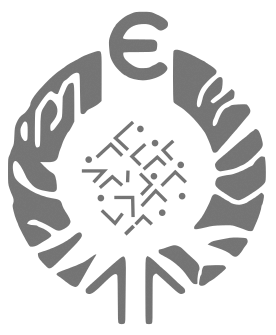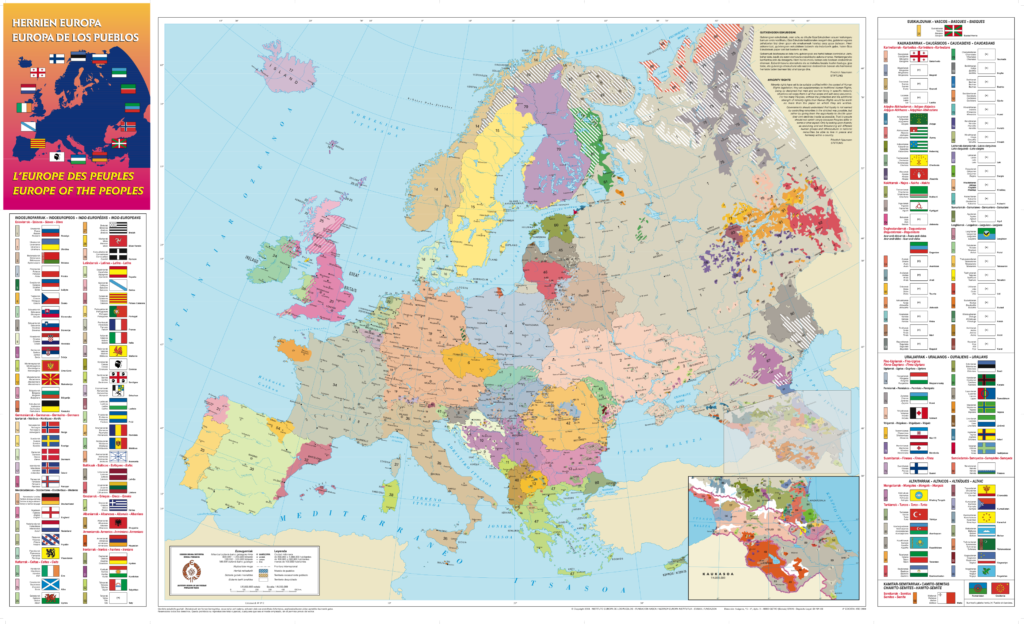Information translated by Google translate ![]()
BASIC DATA
Surface, 20,251 km²
Population, 2,066,880 h (2018)
Capital, Ljubljana (Ljubljana)
Languages: Slovenian (official), Serbo-Croatian.
Ethnic composition: Slovenians 83.1%, Serbs 2%, Croats 1.8%, Bosnians (Muslims) 1.1%,
Hungarians 0.3%, Albanians 0.3%, Macedonians 0.2%, others (Italians, Gypsies, Montenegrins) 11.2% (2002 est.).
Religions: catholic 62.2%, Orthodox 1.4%, others (Jewish, Protestant, Muslim) 2.1%, non-religious 34.3% (est. 2015).
Literacy rate, 99.7%
Human Development Index (HDI), 0,896 (UN-2018) (25th in the world).
Political system, parliamentary republic.

Views of the Ljublianica river, in Ljubljana / Ljubljana, capital of Slovenia.
DEMOGRAPHIC INDICATORS
Birth rate, 8.2 ‰
Mortality rate, 11.6 ‰
Vegetative growth, -0.34%
Life expectancy at birth: men, 74.8 years; women, 82.2 years (est. 2017).
ECONOMY
Agriculture: cereals, potatoes, fruits, grapevine, olive trees.
Livestock: bovine, ovine, porcine, poultry.
Mining: iron, lead, zinc, coal, lignite.
Industry: steel, chemical, textile, wood, electronics, food.
GDP per capita, $ 34,868 (2017)
Sectoral distribution of GDP:
Agriculture, 1.8%
Industry, 32.2%
Services, 65.9% (est. 2017)
Foreign trade:
Exports: manufactured products, machinery and capital goods, chemical and electrical products, automobiles.
37,700 million dollars
Imports: machinery and transport material, manufactured and chemical products, oil and lubricants, electrical equipment, textile and food products.
30,800 million dollars (2016)
HISTORY (XX-XXI centuries)
1918: Dismembered the Austro-Hungarian Empire, Slovenia became part of the new Kingdom of the Serbs, Croats and Slovenes.
1929: Slovenia became part of the Kingdom of Yugoslavia.
1941-45: Occupied between the III German Reich and Italy, at the end of the war it received some Italian territories in the vicinity of Trieste and a small access to the Adriatic Sea.
1945: The Republic of Slovenia was constituted, which was integrated into the Federal Republic of Yugoslavia.
1980: The death of J. Tito favored the pluralism, which provoked a climate favorable to the sovereignty.
1990: In the December referendum, 88% of voters voted in favor of independence.
1991: The parliament of Ljubljana proclaimed the independence of Slovenia, which provoked the intervention of the Yugoslav federal army. The National Assembly adopted a new Constitution.
1992: The European Community recognized the new Republic of Slovenia. In the December elections, Milan Kučan was re-elected as president of the Republic.
1993: Slovenia was admitted to the Council of Europe.
1994: Crisis in the coalition government of Prime Minister Janez Drnovsek, due to the latest aftermath of the «Maribor scandal».
1995: Slovenia tried to stay out of the serious problems afflicting its former partners in the former Yugoslavia, trying to reduce the entry of refugees from Bosnia-Herzegovina.
1996: Legislative elections, which did not entail the desired political balance. Referendum on the reform of the electoral system, which only 37.7% of voters went to the polls.
1997: The international recognition of the progress made by Slovenia, was the invitation to join the Security Council of the United Nations and urged President M. Kučan to an unconditional victory in the presidential elections.
1998: The governments of Slovenia and Croatia agreed to resolve the existing disputes: control of the Krsko power plant, Slovenian property rights on the Adriatic coast and territorial demarcation of the borders.
1999: NATO had rejected the Slovenian candidature in 1997, despite which, during the offensive of the Atlantic organization against Serbia, Slovenia granted permission to the allied forces to fly over its airspace.
2002: Janez Drnovšek won the presidential elections.
2003: Entry into the European Union and NATO was approved in a referendum.
2004: Slovenia was admitted to both the European Union and NATO. The Democratic Party won the elections and a coalition was formed to govern.
2007: Slovenia became the first excommunist country to exchange its national currency for the euro.
2008: Borut Pahor became Prime Minister after forming a center-left coalition that agreed to the government.
2012: Parliament approved a new center-right government, led by Janez Janša as Prime Minister. At the end of the year, there were massive protests against austerity policies. Presidential elections were held, in which Borut Pahor won.
2014: Miro Cerar became Prime Minister after an early election, thanks to the center-left coalition.
2015: Marriage between people of the same sex was rejected in a referendum.
2018: The early elections gave victory to the anti-immigration party, led by Janez Janša, although the center-left party LMŠ managed to form a minority coalition and Marjan Šarec became Prime Minister.

COLABORA
con la actualización de esta información
ELKARLANEAN
informazio hau eguneratuta
COLLABORATE
with the update of this information
inst-europ@inst-europ.org
